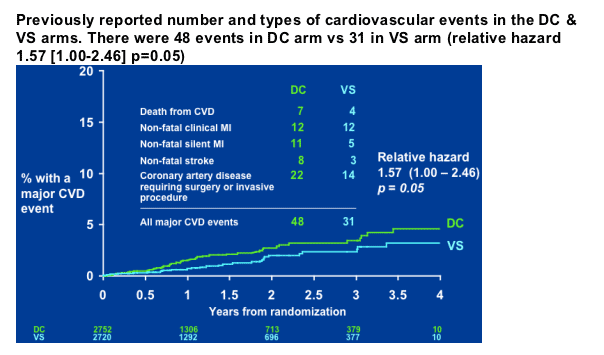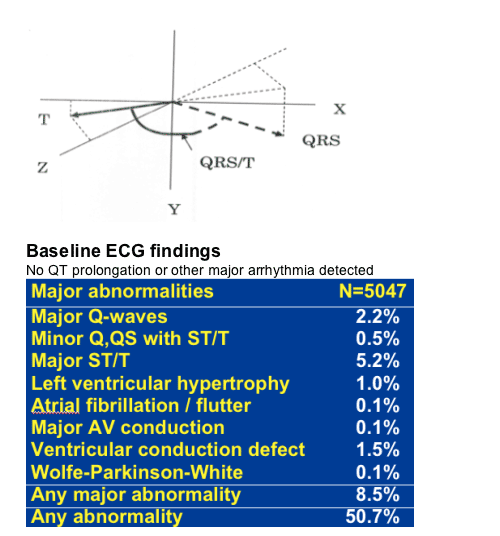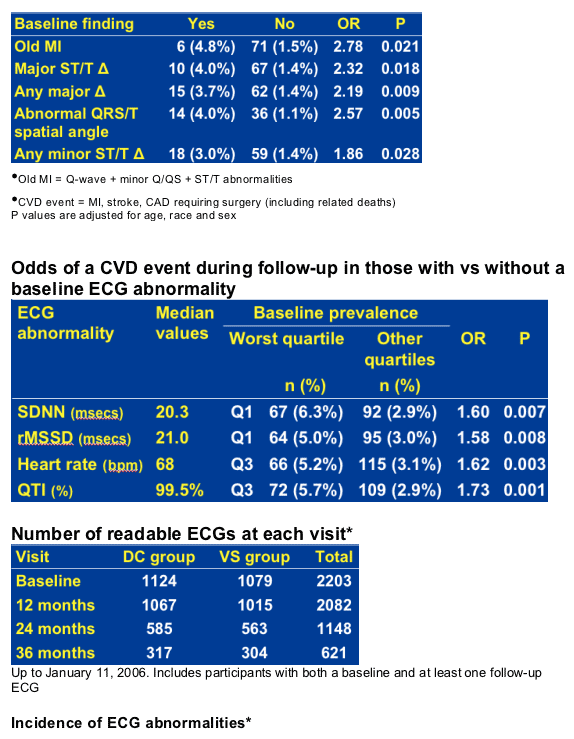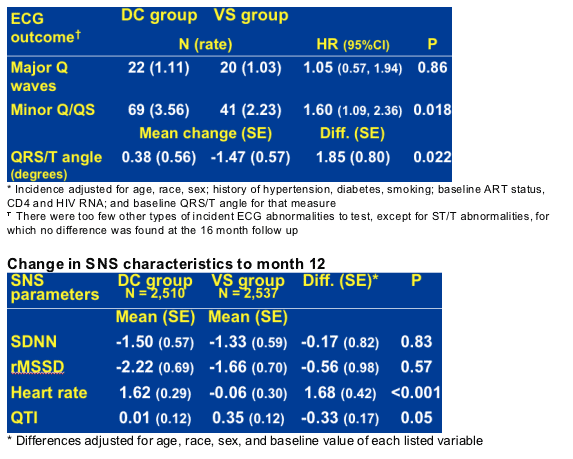 |
 |
 |
| |
Effects of alternate treatment protocols (discontinuation vs viral suppression) on the incidence of electrocardiographic abnormalities among HIV-infected adults in the SMART trial
|
| |
| |
Reported by Jules Levin
9th Lipodystrophy Workshop
July 19-21, 2007, Sydney, Australia
R. Prineas, M. Roediger, A. Carr, W. El-Sadr, S. Esser, G. Grandits, B. Knysz, A. Palfreeman,
for the SMART Study Group and INSIGHT
AUTHOR SUMMARY
ECG abnormalities at baseline were associated with an increased risk of cardiovascular death or disease in SMART
Intermittent, CD4-guided ART was associated with evidence of increased myocardial damage (increases in repolarization abnormalities, heart rate and minor Q/QS changes) relative to continuous ART. These increases are consistent with the clinical cardiovascular findings in SMART

BACKGROUND
SMART compared continuous antiretroviral therapy (ART) (viral suppression arm; VS) and CD4-guided ART (drug conservation arm; DC) in 5472 patients with CD4+ counts >350/mm3 at over 300 sites in 33 countries
On January 11, 2006, enrolment was stopped due to increased risk of AIDS, death, and cardiovascular disease (CVD) in the DC arm
The accelerated development of prognostically significant ECG abnormalities in HIV-infected patients, modulated by ART, has not been demonstrated
The ECG is the only standardized measure for the assessment of ischaemic heart disease (IHD) in SMART that is unbiased by clinic or demographic data
ECG can also detect sub-clinical changes:
--Major Q waves
--Minor Q/QS waves +ST/T wave abnormalities
--Ventricular conduction defects
--Left ventricular hypertrophy
--Major arrhythmias
--QT prolongation (QTI ≥ 116%)
--Increased spatial QRS/T angle
Decreased cardiac autonomic function - heart rate, QT interval, and heart rate variability: SDNN and rMSSD
METHODS
We compared the incidence of ECG abnormalities with VS and DC in SMART to January 11, 2006
Annual, 12-lead ECGs were transmitted electronically and centrally-analyzed (Minnesota codes) blinded to treatment group
Outcome events
--death
--MI, stroke, IHD requiring drugs or invasive procedures, CCF, peripheral vascular disease
Cox model hazard ratios (DC/VS) adjusted for
--demographics (age, race, sex)
--history (hypertension, diabetes, smoking)
--HIV-related parameters (CD4 / HIV RNA)
--ART status at baseline
Changes between VS and DC for heart rate and spatial QRS/T angle were compared using ANOVA and also adjusted for demographics
Autonomic markers of cardiac function
--Heart rate
--QTI - heart-rate-corrected QT duration
--SDNN - standard deviation of normally conducted R-R intervals (an estimate of overall change in heart rate variability)
--rMSSD - square root of the mean value of the squares of differences between successive normal R-R intervals (estimate of short-term components of heart rate variability)
QRS/T spatial angle - an abnormally wide angle between the QRS and T axes indicates a patho-physiological change in myocardial, ionic channel mechanisms that in turn alters the regional sequence of ventricular repolarization





|
| |
|
 |
 |
|
|